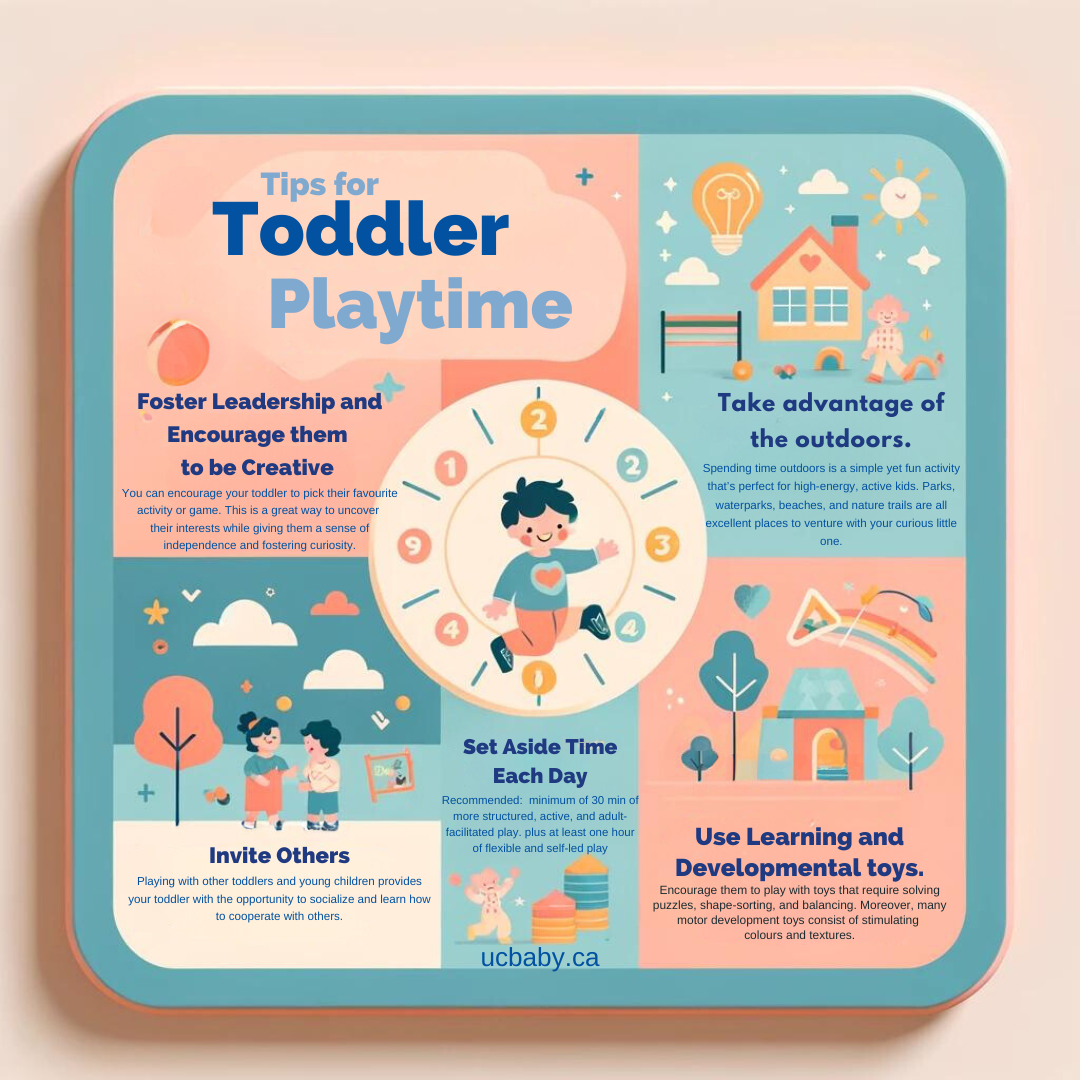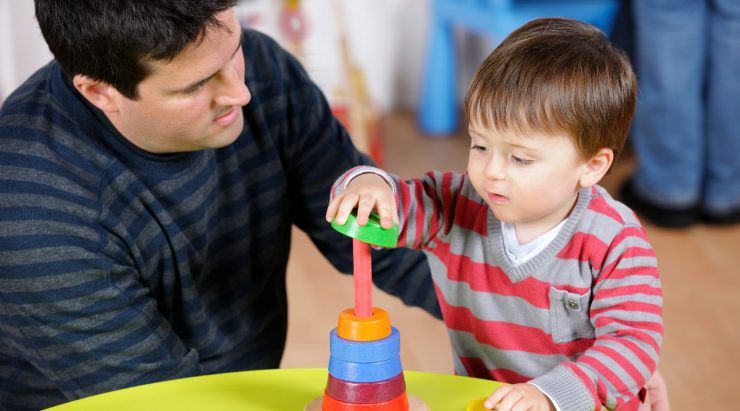Although playtime is a significant part of your little one’s development, it can be tricky to navigate, especially as a new parent. Toddlers need to get the appropriate amount of playtime in their routine to promote. Further, playtime is an excellent way for your child to learn through exploration.
Whether you’re a new parent or not, here are some simple tips to help inspire you and your toddler’s next playtime activities.
1. Take advantage of the outdoors.
There’s no place like the great outdoors. Spending time outdoors is a simple yet fun activity that’s perfect for high-energy, active kids. Parks, waterparks, beaches, and nature trails are all excellent places to venture with your curious little one.
Although certain seasons may be more outdoor-friendly, you can still enjoy a walk no matter the weather — just be sure to have the appropriate gear! If you live in an area with frequent snowfalls, for example, activities like sledding and building a snowman can be great for young ones.
2. Get creative
If you don’t have toys handy or your little one is uninterested in their favourite toy, it’s time to think outside the box. Many playtime activities can be executed with belongings that you already own. Don’t neglect simple yet engaging ideas like playing dress-up and having a tea party. Even if you’re completing chores like gardening or baking, you can have your toddler join in. Almost any activity can be adapted into playtime when you use your imagination!
If you’re interested in reading about affordable activities that involve your whole family, you can find more inspiration in our recent blog post.

3. Foster leadership
Don’t underestimate the power of letting your little one take the lead. While you should always supervise your child during playtime, you can encourage your toddler to pick their favourite activity or game. This is a great way to uncover their interests while giving them a sense of independence and fostering curiosity.
4. Invite others
Playing with other toddlers and young children provides your toddler with the opportunity to socialize and learn how to cooperate with others. This may include peers from daycare and school or possibly relatives and close friends. Further, this time gives parents a break while their little ones navigate their playtime. However, it’s a good idea to establish basic rules to ensure that all parties enjoy their time and are treated respectfully.
5. Set aside time each day
Young children need to receive their daily dose of playtime, according to the American Academy of Pediatrics. On a daily basis, experts suggest a minimum of 30 minutes of more structured, active, and adult-facilitated play and at least one hour of flexible and self-led play. Maintaining a healthy balance between these two categories will allow your toddler to explore their interests and learn what they enjoy.
6. Use learning and developmental toys.
You can consider purchasing some motor development toys if you’re focused on developmental play. These toys are specially designed to help your little one develop fine motor skills. They often include parts that require solving puzzles, shape-sorting, and balancing. Moreover, many motor development toys consist of stimulating colours and textures.
References:
How Much Playtime Do Babies and Toddlers Need?
The Power of Play: 6 Benefits for Child Development
Written by: Alicia Chow
Check our other blog: Living with Pets and Children





 Invitez familles et amis à assister à cet événement mémorable de votre grossesse. Célébrez avec vos proches où qu’ils soient dans le monde ce moment spécial de lien avec l’enfant.
Invitez familles et amis à assister à cet événement mémorable de votre grossesse. Célébrez avec vos proches où qu’ils soient dans le monde ce moment spécial de lien avec l’enfant. Rien n’est plus beau que les battements de cœur de votre bébé. Enregistrez ce son pour toujours dans un Ourson Coup de cœur de UC Baby®. Il ne s’agit pas simplement d’un beau souvenir, mais aussi d’un moyen efficace qui apaise votre bébé pour l’aider à s’endormir.
Rien n’est plus beau que les battements de cœur de votre bébé. Enregistrez ce son pour toujours dans un Ourson Coup de cœur de UC Baby®. Il ne s’agit pas simplement d’un beau souvenir, mais aussi d’un moyen efficace qui apaise votre bébé pour l’aider à s’endormir.

